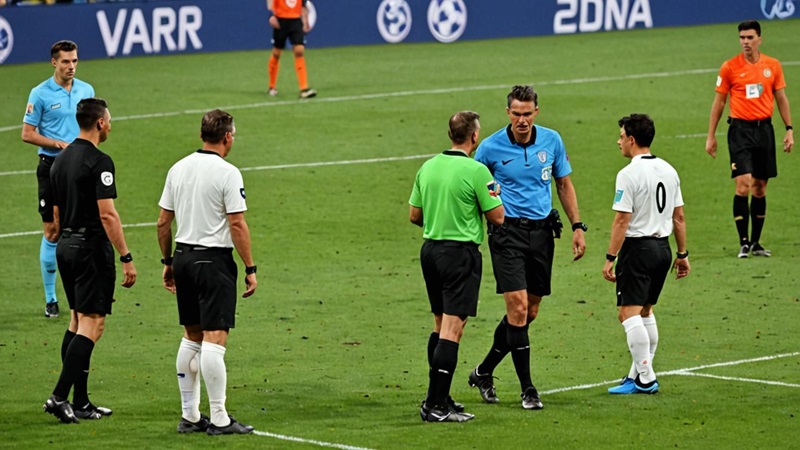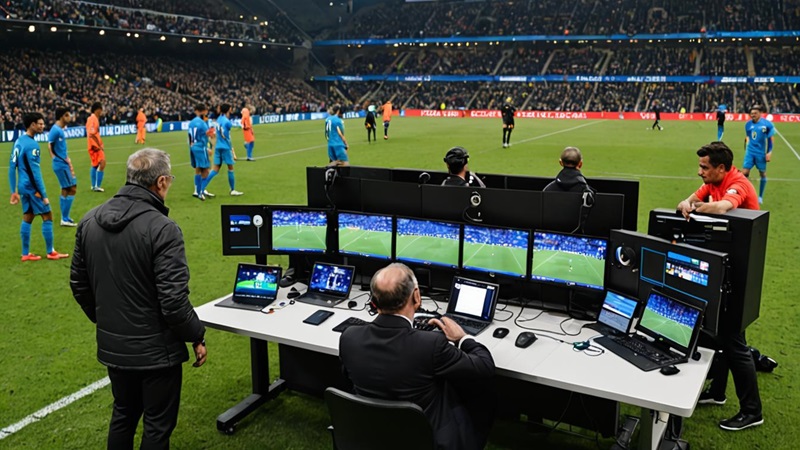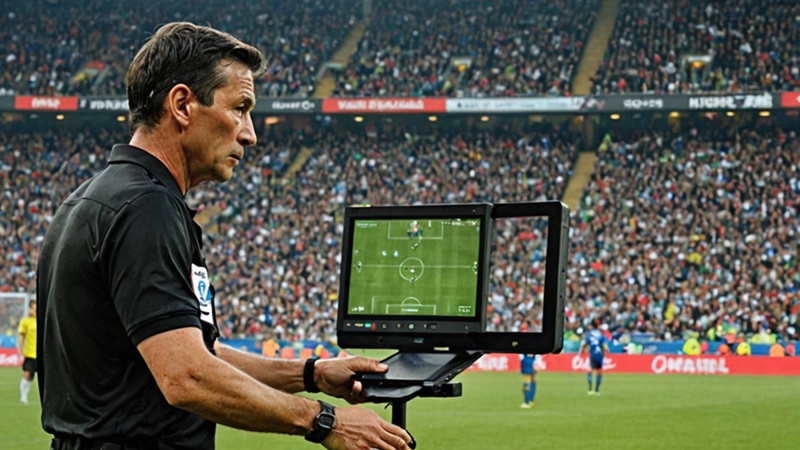What is VAR?

What is VAR?
The Video Assistant Referee (VAR) system is a revolutionary technology introduced to modern football to assist referees in making more accurate decisions during matches.
Implemented by FIFA and other football governing bodies, VAR aims to reduce human errors that can significantly impact the outcome of a game.
The concept is straightforward: a team of assistant referees, equipped with video technology, reviews certain decisions made by the on-field referee to ensure accuracy.
VAR is primarily used for four types of decisions:
- goals and their validity
- penalty decisions
- direct red card incidents
- cases of mistaken identity
This system is designed to intervene only in “clear and obvious errors” or “serious missed incidents.”
The use of VAR is intended to enhance the fairness of the game without disrupting its flow. It operates under the principle of “minimum interference, maximum benefit”, ensuring that the integrity of the sport is maintained.
How VAR works?
The VAR process begins with the on-field referee making a decision.
If the decision falls into one of the four reviewable categories, the VAR team reviews the incident using multiple camera angles and slow-motion replays.
The VAR team can then communicate with the on-field referee through an earpiece, providing their assessment of the situation.
If the VAR team identifies a potential error, the on-field referee can take one of three actions: stick with the original decision, change the decision based on the VAR’s input, or review the footage personally on a pitch-side monitor.
The final decision always rests with the on-field referee. This multi-step process ensures that the most accurate decision is made, balancing technology and human judgment.
The impact of VAR on football
Controversies and criticisms
Since its introduction, VAR has sparked significant debate among fans, players, and pundits.
While many applaud its potential to correct critical errors, others argue that it disrupts the natural flow of the game and diminishes the human element of refereeing.
One common criticism is the inconsistency in its application. Different leagues and referees interpret the “clear and obvious error” standard differently, leading to confusion and frustration among fans.
Additionally, the time taken to review decisions has been a point of contention. Critics argue that lengthy reviews disrupt the rhythm of the game and can cause unnecessary delays.
Despite these criticisms, proponents of VAR maintain that the benefits of achieving more accurate decisions outweigh the drawbacks.
They argue that any system aimed at increasing fairness and reducing errors is a step in the right direction for the sport.

Positive outcomes of VAR
Despite the controversies, VAR has had several positive impacts on football.
One of the most significant benefits is the reduction in critical refereeing errors that can influence the outcome of matches.
High-stakes games, such as World Cup finals and Champions League matches, have seen more accurate and fair results due to VAR intervention.
This increased accuracy has helped maintain the integrity of the sport at the highest levels.
Furthermore, VAR has contributed to fair play by discouraging players from engaging in unsportsmanlike conduct, such as diving or simulation.
Knowing that their actions are being closely monitored by video technology, players are less likely to attempt to deceive referees.
This shift towards cleaner play enhances the overall quality of the game and ensures that matches are decided based on skill and strategy rather than deception.

The future of VAR in football
Technological advancements
As technology continues to evolve, so too will the VAR system.
Future advancements could include more sophisticated camera systems, artificial intelligence to assist in decision-making, and improved communication tools between referees and the VAR team.
These innovations aim to make the VAR process more efficient and accurate, further integrating it into the fabric of modern football.
One potential development is the use of automated offside detection technology.
Currently, offside decisions are manually reviewed by VAR officials, but with advancements in AI and computer vision, real-time offside detection could become a reality.
This would speed up the decision-making process and reduce the margin for human error, making the game fairer and more fluid.
The role of VAR in shaping football’s future
VAR’s introduction has already changed how football is played and officiated, and its influence will only grow in the coming years.
As the system becomes more refined and widely accepted, it is likely to be adopted by more leagues and competitions worldwide.
This widespread adoption will help standardize refereeing decisions, creating a more consistent and fair playing field across different levels of the sport.
Moreover, the presence of VAR encourages continuous improvement in refereeing standards and training. Referees must now be adept at using technology and making quick, accurate decisions under pressure.
This dual skill set will elevate the quality of officiating and contribute to the overall development of the sport. In the end, VAR’s ultimate goal is to ensure that the beautiful game remains fair, competitive, and enjoyable for all.

By understanding VAR’s intricacies, impact, and future potential, we can appreciate its role in shaping modern football.While it may have its detractors, VAR represents a significant step towards a fairer and more accurate sport, benefiting players, officials, and fans alike.
